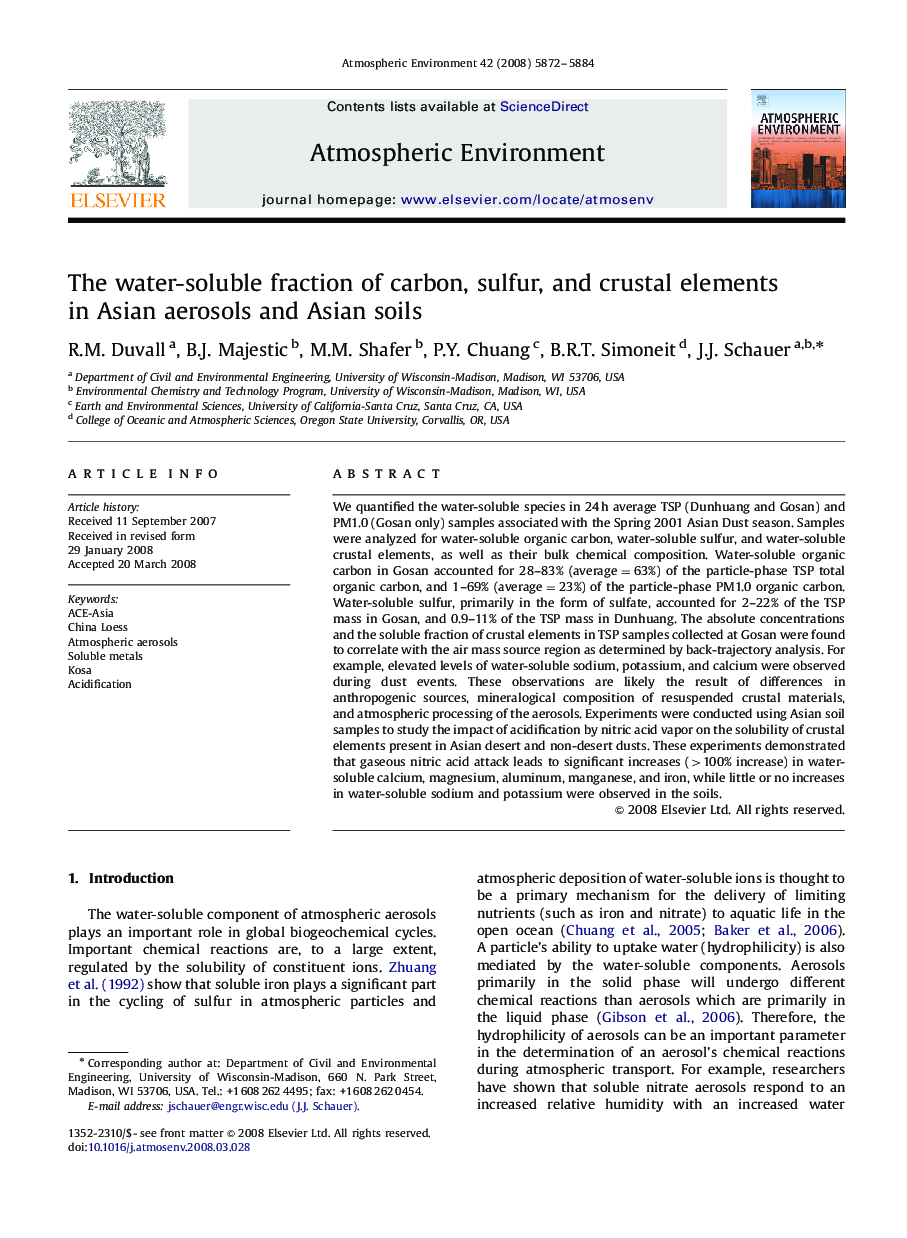| Article ID | Journal | Published Year | Pages | File Type |
|---|---|---|---|---|
| 4442673 | Atmospheric Environment | 2008 | 13 Pages |
We quantified the water-soluble species in 24 h average TSP (Dunhuang and Gosan) and PM1.0 (Gosan only) samples associated with the Spring 2001 Asian Dust season. Samples were analyzed for water-soluble organic carbon, water-soluble sulfur, and water-soluble crustal elements, as well as their bulk chemical composition. Water-soluble organic carbon in Gosan accounted for 28–83% (average=63%) of the particle-phase TSP total organic carbon, and 1–69% (average=23%) of the particle-phase PM1.0 organic carbon. Water-soluble sulfur, primarily in the form of sulfate, accounted for 2–22% of the TSP mass in Gosan, and 0.9–11% of the TSP mass in Dunhuang. The absolute concentrations and the soluble fraction of crustal elements in TSP samples collected at Gosan were found to correlate with the air mass source region as determined by back-trajectory analysis. For example, elevated levels of water-soluble sodium, potassium, and calcium were observed during dust events. These observations are likely the result of differences in anthropogenic sources, mineralogical composition of resuspended crustal materials, and atmospheric processing of the aerosols. Experiments were conducted using Asian soil samples to study the impact of acidification by nitric acid vapor on the solubility of crustal elements present in Asian desert and non-desert dusts. These experiments demonstrated that gaseous nitric acid attack leads to significant increases (>100% increase) in water-soluble calcium, magnesium, aluminum, manganese, and iron, while little or no increases in water-soluble sodium and potassium were observed in the soils.
